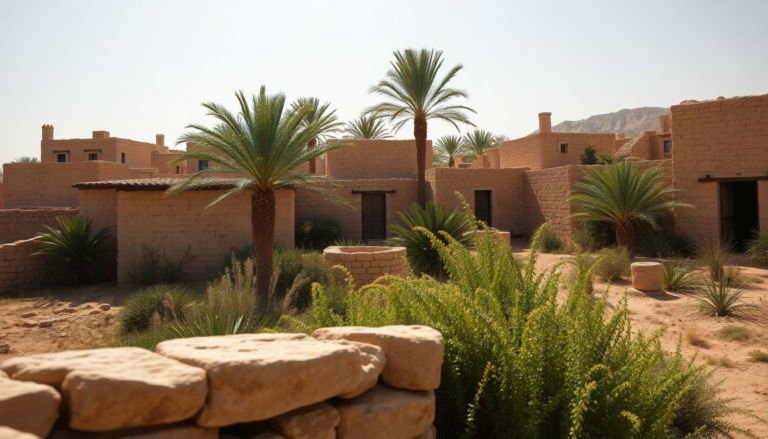Argomenti trattati
In the quaint village of Minqab, Egypt, the allure of Coptic art shines in its silent magnificence. This isn’t just a place of pyramids and pharaohs; it’s a gateway to an ancient world where spirituality and artistry intertwine. Recently, a remarkable archaeological find has brought to light a 6th-century Coptic building during excavations in Asyut, inviting travelers and history enthusiasts alike to explore its storied past.
Unearthing the Coptic building
Asyut, nestled in Upper Egypt, has long been a site of rich historical significance. The recent excavations in Minqab unveiled a Coptic structure dating back to the 6th and 7th centuries CE. Constructed from mud bricks and adorned with white mortar, the building features two levels. The upper level consists of three parallel halls and two additional rooms, while the lower level, accessible via a descending staircase, houses three parallel cells followed by two living spaces. This architectural design hints at a monastic or communal lifestyle, where time was marked by prayer and contemplation.
Artifacts that speak of a bygone era
Among the fascinating relics discovered in the lower level are terracotta vessels of various shapes and sizes, some inscribed with Coptic letters, alongside amphorae and carved stones. A funerary inscription dedicated to a saint, elegantly penned, adds depth to the narrative of this site. The presence of a frieze depicting an antelope and a lion enriches the symbolism of the discoveries, revealing a connection to ancient beliefs and artistic expressions.
A glimpse into Coptic history
Beneath the enchanting beauty of these discoveries lies a profound historical and cultural significance. The structures and murals found in Asyut provide a rare glimpse into the presence of Coptic Christianity during a time that is still under-documented—the 6th and 7th centuries CE, a transitional period between the Byzantine Empire and the advent of Islam in Egypt. This finding is more than just an archaeological triumph; it’s a treasure trove of spiritual heritage that continues to astonish scholars and enthusiasts.
The continuing journey of discovery
The Minqab site, already recognized since the 1960s, has emerged as an archive of art and spirituality that challenges our perceptions of Egypt’s historical landscape. Dr. Muhammad Ismail Khaled, Secretary General of the Supreme Council of Antiquities, emphasized that the architectural features and frescoes of this building should be viewed as a valuable snapshot of Coptic artistic and spiritual life. Each symbol and detail left behind is a testament to a rich narrative, ready to be studied and understood.
Cultural roots and identity
The value of these findings is particularly poignant in today’s context, where cultural roots risk fading into obscurity. Rediscovering the voices of the past is crucial for reinforcing collective identity. It serves as a reminder that Egypt’s history transcends the grandeur of its pyramids and pharaohs; it is also a land of hidden monasteries, forgotten saints, and artistic expressions that resonate with clarity even today.
Future excavations and hopes
The archaeological mission continues its work, driven by a desire to unveil a silent yet powerful history to the world. Perhaps, among the sands of Minqab, there are still undiscovered frescoes and relics waiting to be illuminated by the light of day. And who knows, maybe in those sacred, barren cells, someone once lifted their eyes to the heavens and whispered a prayer. Thanks to this discovery, those voices are beginning to echo once more, offering us a fragment of our shared humanity.

